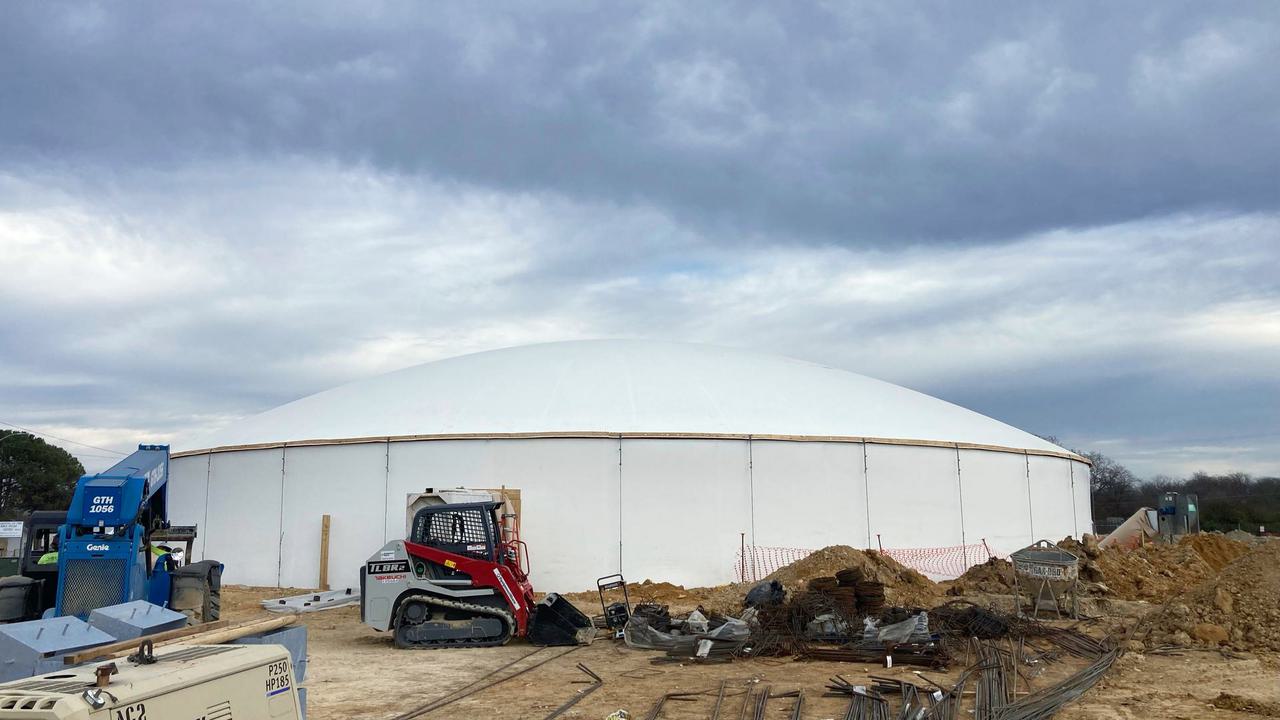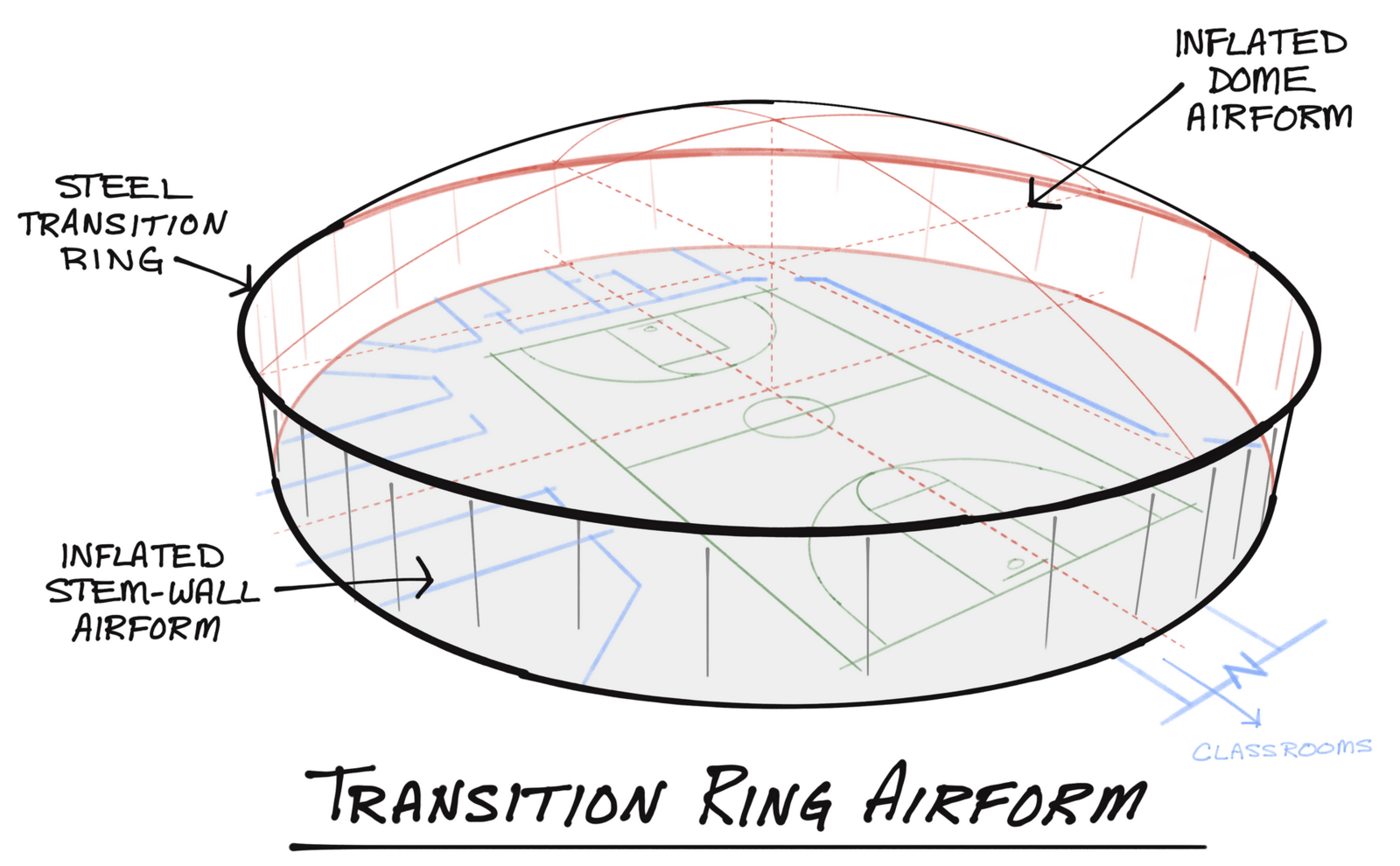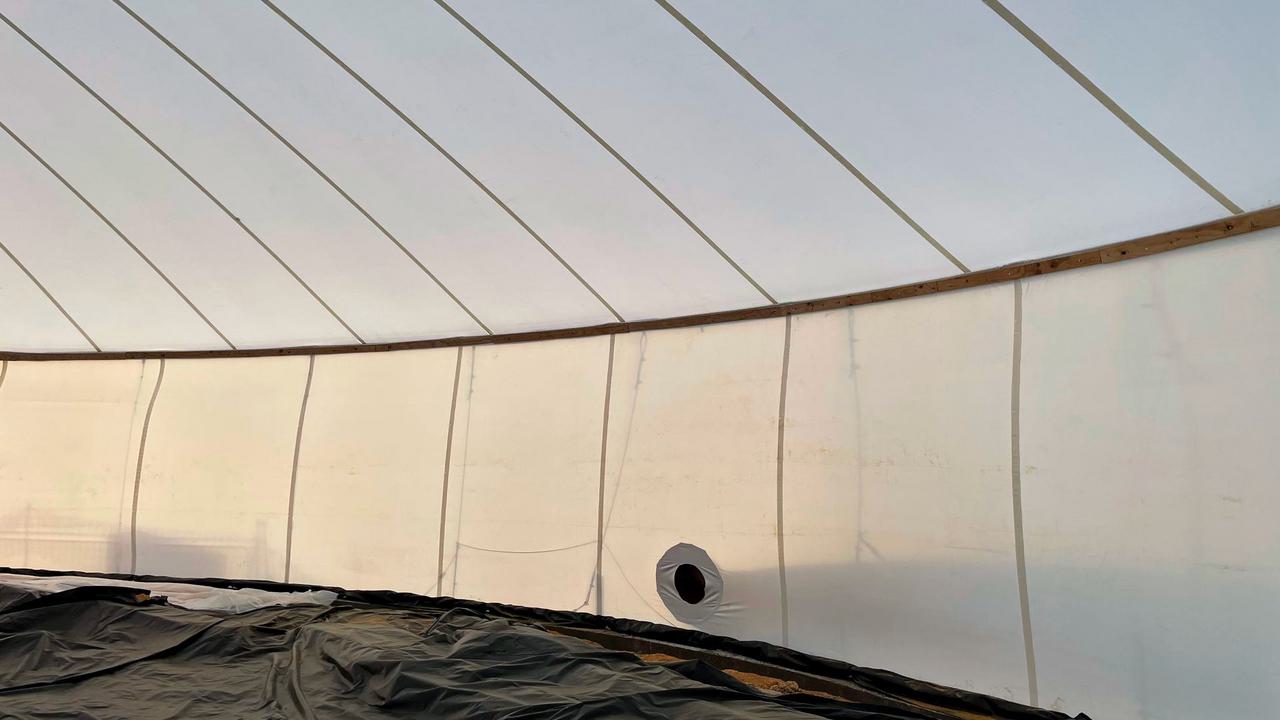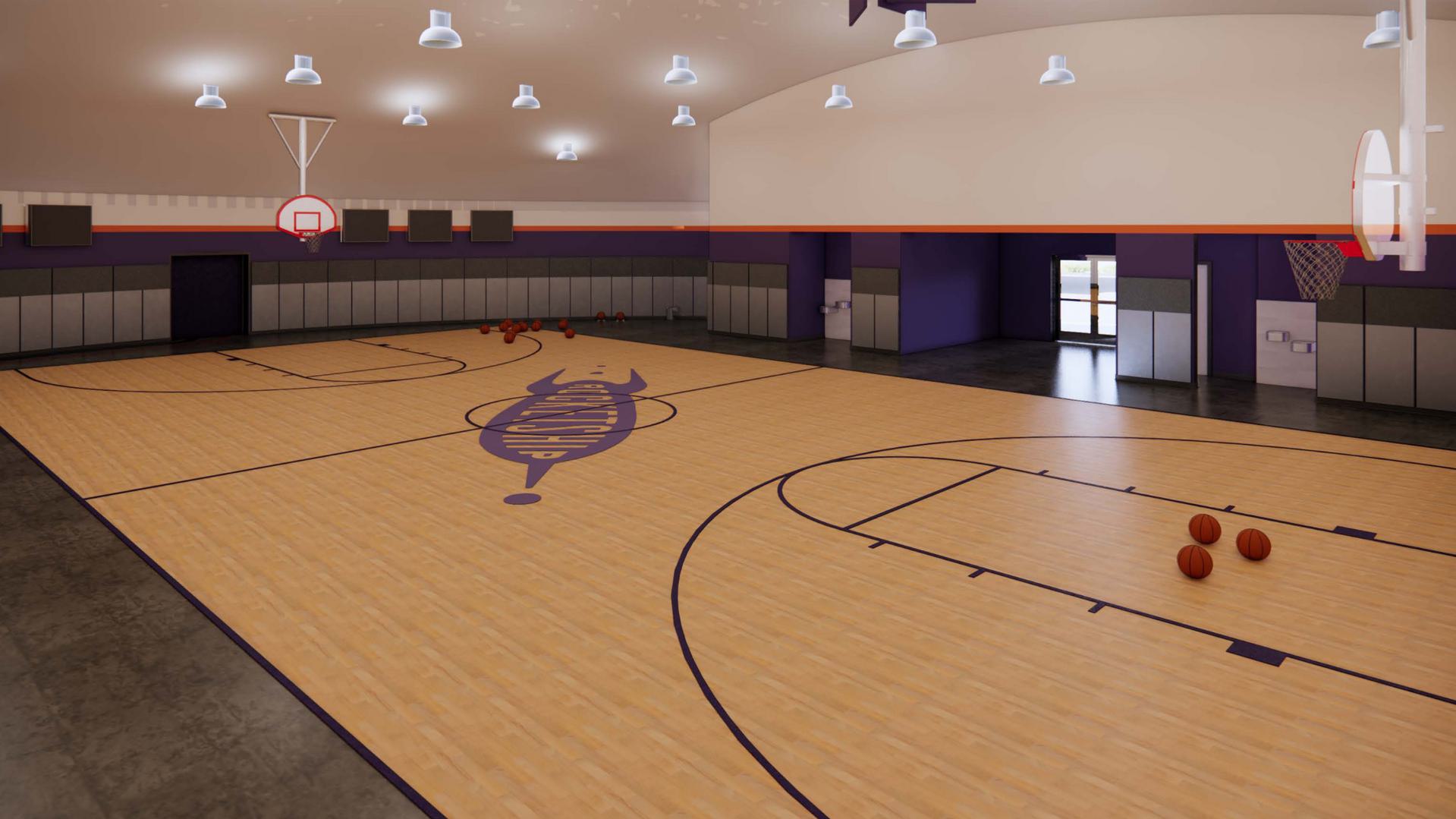Why and How Rocketship Is Building a Monolithic Dome Gym and Cafeteria

Rendering of the Monolithic Dome gym and cafeteria next to the two story classroom structure. Rocketship Public Schools broke ground on October 13, 2021, and plan to start classes in August 2022.
Rocketship Public Schools is constructing an early-elementary charter school in Fort Worth, Texas. The new two-story school building will feature an attached Monolithic Dome multipurpose gymnasium, cafeteria, and storm shelter. The concrete dome shell is complete and while we wait for the August 2022 opening, we can discuss two reasons this particular dome is unique—why they built it and the way it’s made.
Rocketship Public Schools opened its first charter school in San Jose, California, in 2007 with a focus on pre-kindergarten to fifth grade. “Rocketship uses a ‘hybrid’ model of learning using individualized online learning as well as classroom teaching and small-group tutoring,” according to Wikipedia. “Rocketship focuses on educating students from low-income families in order to eliminate the achievement gap.”
Rocketship operates thirteen schools in the Bay Area, three around Nashville, two in Milwaukee, and three in Washington D.C. This school will be the first in Texas. It’s under construction in the Stop Six neighborhood in Fort Worth. They will start with pre-kindergarten to third grade with plans to expand to fifth grade in the future.
Storm shelter required
The main structure is a conventional two-story building with classrooms, offices, and learning labs. Connected to the classroom building is a Monolithic Dome. Why a dome? Because the building code required a storm shelter.
In 2015, the International Building Code (IBC) adopted a significant change:
423.4 Group E Occupancies. In areas where the shelter design wind speed for tornadoes is 250 MPH in accordance with Figure 304.2(1) of ICC 500, all Group E occupancies with an aggregate occupant load of 50 or more shall have a storm shelter constructed in accordance with ICC 500. The shelter shall be capable of housing the total occupant load of the Group E occupancy.
What this new code says is that Group E Occupancies—educational buildings—built in areas where tornadoes are expected are required to construct a storm shelter. The shelter must meet the ICC 500 specifications.
This is a big change.
Before 2015, the building codes regulated the design of storm shelters but did not mandate construction. With this update, unless a municipality explicitly excludes this change, storm shelters are now required for all new schools. Fort Worth adopted the mandate so when Rocketship planned its new building, it had to incorporate a storm shelter.

The inflated Transition Ring Airform on January 14. It started with a messy pile of fabric and in a short time became a wall and domed structure.
Of course, anyone building a school in tornado alley already has tornado safety in mind. The school board and community want to keep their students safe. The question is, how?
They could choose to reinforce the hallways or strengthen a portion of the conventional structure. These options increase the cost without adding usable space for the school.
The Monolithic Dome is an affordable structure for any school district to consider—wind storms or not. It is also naturally tornado resistant and nearly meets the ICC 500 code without any changes. The differences are mostly in using tornado-rated doors, windows, and protected HVAC penetrations. Plus, the clear span nature of the dome makes it a natural space for athletics and other large spaces.
Rocketship went with a Monolithic Dome gymnasium and cafeteria. The fact it’s also a storm shelter is practically a free feature of its design.

The Transition Ring Airform membrane incorporates a 4-inch steel ring made from quarter-inch square-tube steel. The ring forces a “transition” from the inflated stem-wall below and the dome above.
Fabric formed stem-wall
For years the common construction method for school and gymnasium domes was to build a cylinder-shaped masonry wall—a stem wall—then attach the Airform membrane to the top edge and inflate it to make the dome shape. Foam, steel, shotcrete are applied to the interior surface of the membrane to complete the shell.

Inside the newly inflated membrane you can see the dark line of the tension ring where it delineates the stem-wall and dome.
Rocketship used a new construction method. Instead of building a labor-intensive block wall, a special Transition Ring Airform membrane was attached to the foundation. Incorporated in the membrane was a second tension ring made from 4-inch square tube steel. On January 14, the inflator fans were switched on. Where there was nothing before, a building begins to take shape. The fans inflate the membrane and lift the steel tension ring into the air. In a short time, there is a “wall” and “dome.”
Shell construction continues inside the inflated form with foam, steel, and concrete. The finished structure may appear as two structural elements, but it is only one, monolithic shell.

A cross-section of the Hoop Dome shows how all layers are integrated together making one piece structure. This adds to the already large safety factor during a tornado and it eliminates the “cold joint” between the wall and dome section.
It’s hard to overstate what a jump this is in dome construction.
This new dome—a Hoop Dome—cuts one big step from construction, reduces the number of subcontractors, streamlines construction schedules, and accelerates the entire construction project. Work is done inside the Airform membrane, protected from rain and other weather while providing a controlled environment for the concrete to set. When the dome shell is complete, a brick veneer is added to complete the look.
Of course, the students won’t know any of this. The dome will be just a cool building where they take PE or eat lunch and, occasionally, take shelter.
